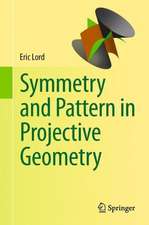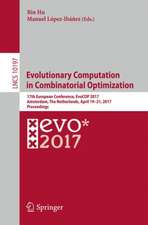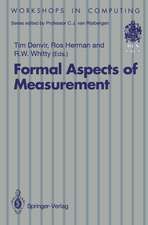Proof in VDM: Case Studies: Formal Approaches to Computing and Information Technology (FACIT)
Editat de Juan C. Bicarreguien Limba Engleză Paperback – 2 mar 1998
Preț: 642.84 lei
Preț vechi: 803.55 lei
-20% Nou
Puncte Express: 964
Preț estimativ în valută:
123.02€ • 133.58$ • 103.34£
123.02€ • 133.58$ • 103.34£
Carte tipărită la comandă
Livrare economică 22 aprilie-06 mai
Preluare comenzi: 021 569.72.76
Specificații
ISBN-13: 9783540761860
ISBN-10: 3540761861
Pagini: 244
Ilustrații: XV, 226 p.
Dimensiuni: 155 x 235 x 13 mm
Greutate: 0.35 kg
Ediția:Softcover reprint of the original 1st ed. 1998
Editura: SPRINGER LONDON
Colecția Springer
Seria Formal Approaches to Computing and Information Technology (FACIT)
Locul publicării:London, United Kingdom
ISBN-10: 3540761861
Pagini: 244
Ilustrații: XV, 226 p.
Dimensiuni: 155 x 235 x 13 mm
Greutate: 0.35 kg
Ediția:Softcover reprint of the original 1st ed. 1998
Editura: SPRINGER LONDON
Colecția Springer
Seria Formal Approaches to Computing and Information Technology (FACIT)
Locul publicării:London, United Kingdom
Public țintă
Professional/practitionerCuprins
1 A Tracking System.- 1.1 Introduction.- 1.2 Context of the Study.- 1.3 A Formal Model of a Tracking System.- 1.4 Analysing the Model with Proof.- 1.5 Issues Raised by the Study.- 1.6 Conclusions.- 1.7 Bibliography.- 2 The Ammunition Control System.- 2.1 Introduction.- 2.2 The Specification.- 2.3 Satisfiability of ADD-OBJECT.- 2.4 Modifying the Specification.- 2.5 Discussion.- 2.6 Bibliography.- 2.7 Auxiliary Results.- 3 Specification and Validation of a Network Security Policy Model.- 3.1 Introduction.- 3.2 The Data Model.- 3.3 The System State.- 3.4 Operations Modelling the SEFs.- 3.5 The Proofs.- 3.6 Conclusions.- 3.7 Bibliography.- 4 The Specification and Proof of an EXPRESS to SQL “Compiler”.- 4.1 STEP and EXPRESS.- 4.2 An Outline of EXPRESS.- 4.3 The Abstract EXPRESS Database.- 4.4 A Relational Database.- 4.5 A Concrete EXPRESS Database.- 4.6 A Refinement Proof.- 4.7 General Experiences and Conclusions.- 4.8 Bibliography.- 5 Shared Memory Synchronization.- 5.1 Introduction.- 5.2 Formal Definitions.- 5.3 The VDM Specification of the Definitions.- 5.4 A Theory for Shared Memory Synchronization.- 5.5 Discussion.- 5.6 Related Work.- 5.7 Appendix A. A Formal Theory for Relations.- 5.8 Appendix B. Some Rules Used in the Proof.- 5.9 Bibliography.- 6 On the Verification of VDM Specification and Refinement with PVS.- 6.1 Introduction.- 6.2 The PVS System.- 6.3 From VDM-SL to the Higher Order Logic of PVS.- 6.4 A Specification Example: MSMIE.- 6.5 Representing Refinement.- 6.6 Discussion.- 6.7 Conclusion.- 6.8 Bibliography.- 7 Supporting Proof in VDM-SL using Isabelle.- 7.1 Introduction.- 7.2 Overview of Approach.- 7.3 Syntax.- 7.4 Proof System of VDM-LPF.- 7.5 Proof Tactics.- 7.6 Transformations.- 7.7 Generating Axioms: An Example.- 7.8 Future Work.- 7.9 Conclusion.-7.10 Bibliography.- 7.11 VDM-SL Syntax in Isabelle.
Caracteristici
Provides a companion volume to Proof in VDM: A Practitioner's Guide which is already available in the FACIT series * The industrial application of formal methods is on the increase - particularly in the case of safety-critical systems


































